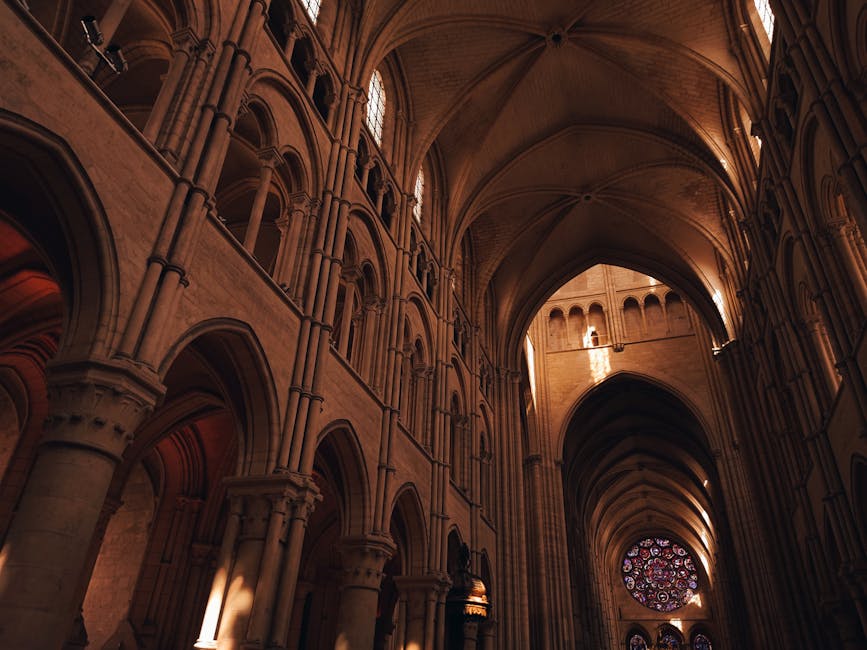Cathédrale Saint-André, also known as Bordeaux Cathedral, is a Roman Catholic church located in Bordeaux, France. Dedicated to Saint Andrew, it is the seat of the Archbishop of Bordeaux. The cathedral was consecrated in 1096 by Pope Urban II and has been a national monument of France since 1862. Its architectural style is primarily Gothic, with elements of Romanesque design in its oldest parts. The cathedral’s most distinctive feature is its separate bell tower, known as the Tour Pey-Berland, which stands apart from the main building. Over the centuries, Cathédrale Saint-André has played a significant role in French history, hosting royal weddings and serving as a landmark of Bordeaux’s religious and cultural heritage.

Cathédrale Saint-André: Architectural Evolution Through The Centuries
The Cathédrale Saint-André in Bordeaux, France, stands as a testament to the ever-changing architectural styles that have swept through Europe over the centuries. This magnificent structure has undergone numerous transformations since its inception, resulting in a unique blend of architectural elements that tell the story of its long and fascinating history.
The cathedral’s origins can be traced back to the 11th century when construction began on a Romanesque church. However, little remains of this original structure, as it was largely replaced during subsequent renovations and expansions. The most significant changes occurred during the Gothic period, which left an indelible mark on the cathedral’s appearance.
As the 12th century progressed, the popularity of Gothic architecture spread throughout France, and Bordeaux was no exception. The cathedral’s nave was rebuilt in the new style, featuring the characteristic pointed arches and ribbed vaults that define Gothic architecture. This transformation marked the beginning of a centuries-long process of architectural evolution for Cathédrale Saint-André.
One of the most striking features of the cathedral is its north portal, known as the Porte Royale. Constructed in the 13th century, this elaborate entrance showcases the intricate stone carvings and sculptures typical of High Gothic architecture. The portal’s tympanum depicts the Last Judgment, a common theme in medieval religious art, and serves as a prime example of the craftsmanship of the era.
Moving into the 14th and 15th centuries, the cathedral continued to evolve. The addition of side chapels along the nave reflected the growing trend of private devotion and the increasing wealth of the city’s merchants and nobles. These chapels, each with its own unique design and ornamentation, added depth and complexity to the cathedral’s interior.
Perhaps the most iconic feature of Cathédrale Saint-André is its freestanding bell tower, known as the Tour Pey-Berland. Constructed in the 15th century, this Gothic tower stands apart from the main body of the cathedral, a unique architectural choice that sets it apart from many of its contemporaries. The tower’s separation from the main structure was likely due to concerns about the stability of the cathedral’s foundations, but it has since become a beloved landmark in its own right.The Cathédrale Saint-André, located in Bordeaux, France, stands as a magnificent example of Gothic architecture and a testament to the city’s rich religious history. As the seat of the Archbishop of Bordeaux, it has played a significant role in the spiritual and cultural life of the region for centuries. The cathedral’s striking features, including its soaring spires and intricate stone carvings, continue to captivate visitors and serve as a symbol of Bordeaux’s heritage. Despite facing numerous challenges throughout its long history, including wars and natural disasters, the Cathédrale Saint-André has endured as a beloved landmark and an important center of worship, cementing its place as one of France’s most cherished religious monuments.
